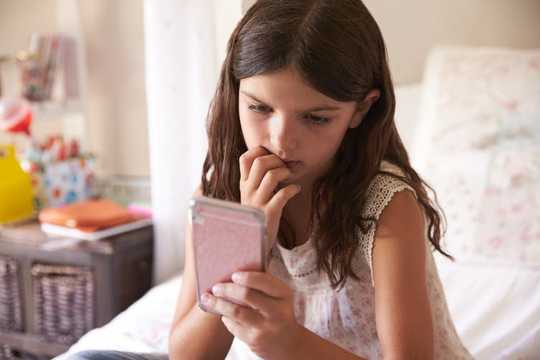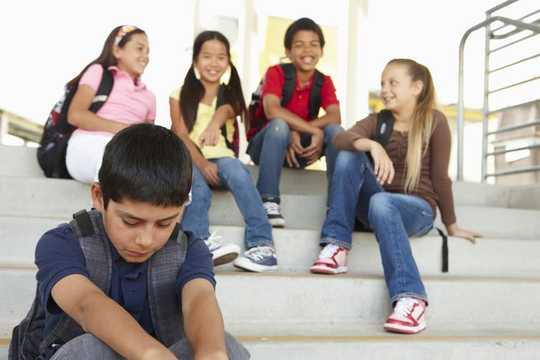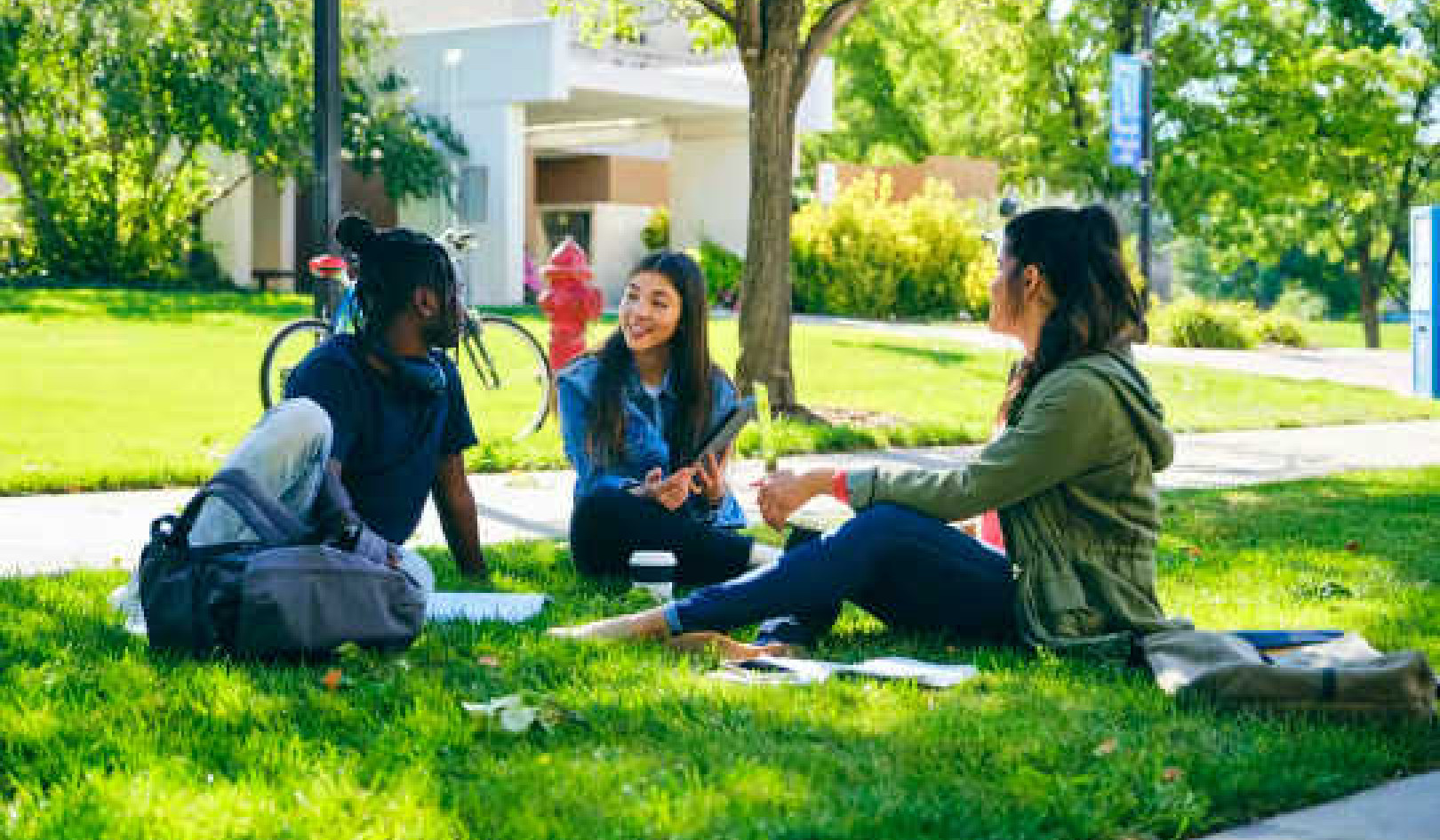 Monkey Business Images/Shutterstock
Monkey Business Images/Shutterstock
There are growing fears about the rise of cyberbullying and its impact on children. Unlike traditional face-to-face bullying, a bully can conceal their identity online and target their victims constantly without the limits of location or time.
A lack of reporting of cyberbullying and its low visibility when compared to face-to-face bullying make it difficult to gauge its true extent and impact. However, investigating rates of cyberbullying is extremely complex.
Teachers regard cyberbullying to be more serious than face-to-face bullying because there are always new ways for children to bully online through new apps and technologies, making it difficult to identify and respond to cyberbullying. Young people also believe that cyberbullying is more serious and more problematic in the school environment than face-to-face bullying.
However, it is difficult to truly assess how widespread cyberbullying is. It has been shown that children report cyberbullying less due to fear of consequences. Children’s worries include that telling someone about cyberbullying will make the situation worse or lead to the confiscation of their electronic devices. They are also concerned about not knowing what the repercussions of reporting cyberbullying might be.
This research may qualify the findings of a recent Ofcom report, which suggests that cyberbullying is not more of a widespread problem than real-life bullying. The report found that older children aged 12-15 are just as likely to experience “real life” bullying as bullying on social media. Younger children aged eight to 11 were found to be more likely to experience traditional bullying (14%) than online bullying (8%).
Previous research has also found that traditional bullying takes place more often than cyberbullying. A 2017 study in England of 120,115 15-year-olds found rates of traditional bullying to be far higher. Less than 1% of the teenagers said they had experienced cyberbullying only, while 27% had faced traditional bullying – and 3% said they had encountered both types.
 The involvement of bystanders is crucial to stop bullying. Monkey Business Images/Shutterstock
The involvement of bystanders is crucial to stop bullying. Monkey Business Images/Shutterstock
These findings run counter to the perceptions of teachers and children. Bullying is also more visible in the physical world and more likely to be noticed by teachers in the school environment. Teachers are less likely to notice and identify cyberbullying.
The bystander effect
The role of bystanders who get involved has been shown to be crucial in stopping bullying. Here, too, there are differences between online and offline cases. Children report that bystanders are more likely to get involved to stop traditional bullying than for cyberbullying incidents. They considered the reason to be the physical presence of authority figures in the real world.
Social psychological research suggests the presence of other onlookers tends to reduce a person’s willingness to intervene in a positive way: “there’s no need for me to help since someone else will.” This is known as the “diffusion of responsibility”. This theory suggests that people are less likely to intervene in online bullying because of the potential greater number of virtual onlookers. The case of Canadian 14-year-old Carson Crimeni, whose death was broadcast on the internet, is a tragic example.
On the other hand, the online environment provides increased anonymity and autonomy to young people. My research suggests that children themselves are more likely to intervene in cyberbullying than traditional bullying. This research also found that children intervene in online bullying more when the incident is severe, suggesting that “diffusion of responsibility” may also be influenced by how serious the incident is perceived to be.
Tackling cyberbullying
Despite widespread concern about cyberbullying, children lack knowledge of how to stay safe online – for instance by not giving out personal information or by using blocking and reporting tools. For example, in my recent study conducted in the UK, children were found to be complacent about this issue. Children think they know how to stay safe online, but struggled to actually articulate ways to do this. This might leave some children vulnerable and make risks more likely to lead to harm.
Teachers may also lack the skills to deal with cyberbullying. My research has found that many recognise it to be a problem and feel they have a responsibility to address it and educate young people about appropriate online behaviour, but fewer felt confident about how to address the issue.
The NSPCC, Anti-Bullying Alliance, and Diana Award have teamed up to launch a national campaign called Stop, Speak, Support to encourage children to think critically about what they see online and speak out when necessary.
The Ofcom report found that approximately a fifth of children aged eight to 15 are bullied in some way. In order to counter the effects of bullying we need to promote intervention. Those who witness bullying as well as figures of authority such as teachers should be encouraged to take responsibility for addressing it both in “real life” and in the online world.![]()
About the Author
Peter Macaulay, Lecturer in Social Psychology and Individual Differences, Staffordshire University
This article is republished from The Conversation under a Creative Commons license. Read the original article.

Related Books:
Here are 5 non-fiction books on parenting that are currently Best Sellers on Amazon.com:The Whole-Brain Child: 12 Revolutionary Strategies to Nurture Your Child's Developing Mind
by Daniel J. Siegel and Tina Payne Bryson
This book provides practical strategies for parents to help their children develop emotional intelligence, self-regulation, and resilience using insights from neuroscience.
Click for more info or to order
No-Drama Discipline: The Whole-Brain Way to Calm the Chaos and Nurture Your Child's Developing Mind
by Daniel J. Siegel and Tina Payne Bryson
The authors of The Whole-Brain Child offer guidance for parents to discipline their children in a way that promotes emotional regulation, problem-solving, and empathy.
Click for more info or to order
How to Talk So Kids Will Listen & Listen So Kids Will Talk
by Adele Faber and Elaine Mazlish
This classic book provides practical communication techniques for parents to connect with their children and foster cooperation and respect.
Click for more info or to order
The Montessori Toddler: A Parent's Guide to Raising a Curious and Responsible Human Being
by Simone Davies
This guide offers insights and strategies for parents to implement Montessori principles at home and foster their toddler's natural curiosity, independence, and love of learning.
Click for more info or to order
Peaceful Parent, Happy Kids: How to Stop Yelling and Start Connecting
by Dr. Laura Markham
This book offers practical guidance for parents to shift their mindset and communication style to foster connection, empathy, and cooperation with their children.






















